10 Types Of Ocean Pollution
About 70% of the earth’s surface is water. Oceans and Seas are one of the most precious sources which need to be conserved for the good of our planet and all living organisms.
However, our oceans and seas are being polluted due to human activities, and Ocean Pollution has a negative impact on human health as well.
Hence, in this day and age, where material progress is considered vital for the global economy, sustainable development is essential to safeguard our natural resources and preserve them for future generations.
These water bodies are essential to our existence as they regulate climate, cause rainfall, provide the majority of the earth’s oxygen supply and are home to several species of plants and animals that constitute the marine ecosystem.
However, since the 1900s, the marine environment has been subject to numerous kinds of pollution that have degraded the quality of waters leading to the extinction of many species while others, like the Hawaiian monk seals and pacific loggerhead turtles, are endangered.
While there are many types of ocean pollution and different sources or pathways through which pollutants enter the watery habitat, plastic constitutes the single largest cause of ocean pollution today.
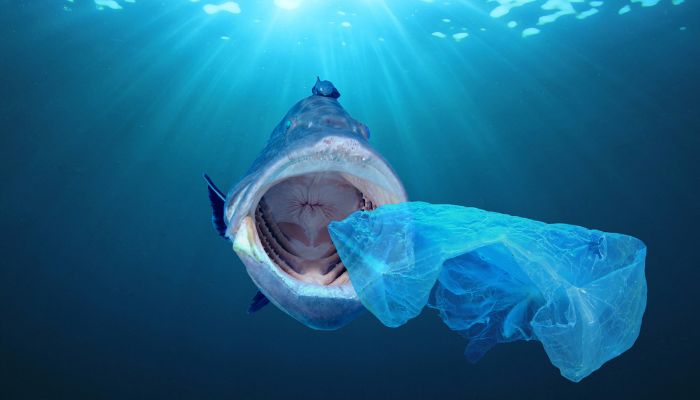
Per the studies conducted on marine pollution, it has been estimated that plastic debris will outnumber the fish in the oceans by 2050 if the same amount continues to be dumped into the oceans every year.
About 12 million metric tons of plastic is dumped into the ocean each year, the weight of which is equal to 100,000 blue whales. Plastic accumulation in the oceans has resulted in the formation of garbage patches, the biggest being the Great Pacific Garbage Patch which has about 1.8 trillion pieces of plastic and is twice the land area of Texas.
The consequences of ocean pollution are far-reaching and complex. To put it in figures, around 100 million marine animals lose their lives annually due to ocean pollution, impacting over a thousand marine species. Ocean pollution has created 500 dead zones where oxygen levels are so low that life cannot exist.
So what are the other types of ocean pollution, and what can be done to mitigate this problem? This article tries to answer these questions.
Types of Ocean Pollution
1. Plastic and Garbage pollution
Plastic bottles, bags, cigarette butts, plastic pieces, straws, tires, netting etc., threaten the marine ecosystem as fish and other creatures get entangled in them, suffocate and die. Turtles and seabirds can sometimes confuse them with food and even digest them, causing a rupture in their digestive system and eventual death through starvation.
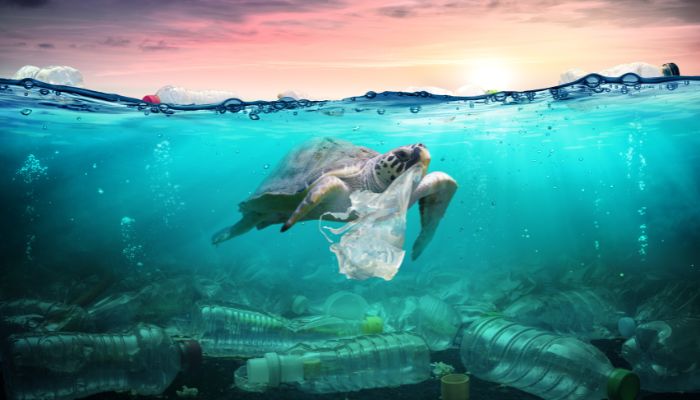
Microplastics are small pieces or fragments of plastic that are eaten by fish and then enter the human body. According to a recent study, the fish in the North Pacific consume about 24,000 tonnes of plastic in a year and transfers it to the bigger fish and then to humans. It was found that a quarter of fish sold in California’s fish markets had plastic in their guts. It was plastic microfibres, to be more precise.
It also found that an average person eats 74,000 microplastics every year. The number might be high for seafood lovers!
2. Pollution from fertilisers, pesticides, and insecticides
Pollution can be defined as the entry of contaminants into oceans. These artificial chemicals are harmful and are usually released far from the coastlines. Nutrient-rich fertilisers, pesticides, insecticides and herbicides are sprayed on farms, and the excess often ends up in nearby streams, rivers, bays and estuaries, which carry them to the ocean.
Sometimes chemical pollutants can completely disrupt the food chain. E.g.-, DDT is an insecticide that led to the bald eagle’s addition to the United States Fish and Wildlife endangered species list.
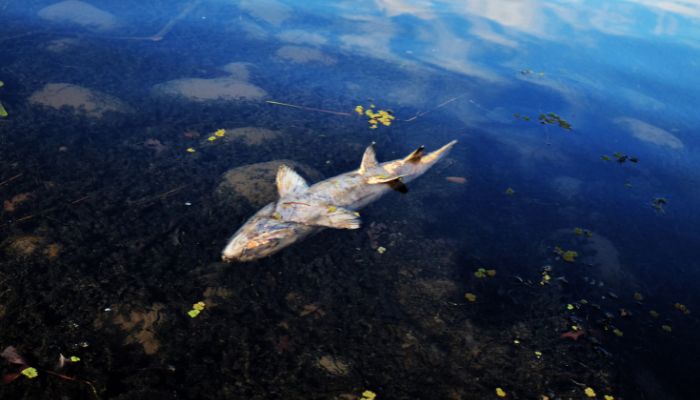
Also, PFA is a type of chemical used in many household items. It is stored in human and marine animals’ bloodstreams. Certain medicines taken by human beings that are not fully absorbed by our bodies also end up in the marine food webs. Aquaculture also releases large amounts of antibiotics and parasites from fish farms and untreated waters into the oceans.
3. Pollution From Noise Made by Ships and Maritime Equipment
Marine pollution is not only plastic or other pollutants that are tangible, but it includes other intangible aspects such as noise pollution. Many marine mammals, like whales and dolphins, do not have sharp eyesight. They understand their surroundings and communicate with their species over large distances using sounds. This is known as echolocation.
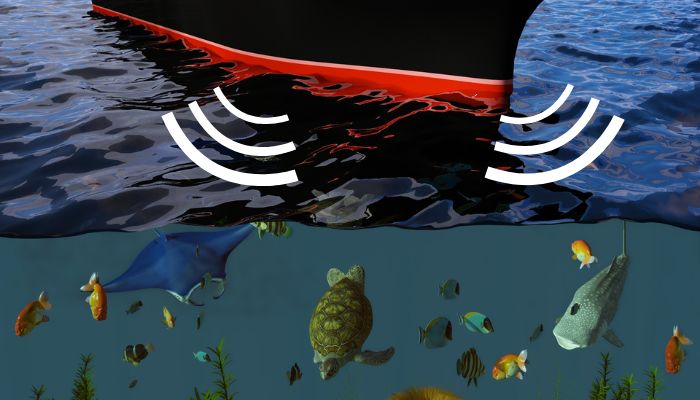
However, artificial sounds from ships, sonars, and other equipment disrupt their communication. It could disturb their lifecycles and affect migration, reproduction patterns, and hunting processes. Since they are sensitive to sounds, excess noise can harm their health. Apart from noise, these beautiful mammals are hurt by the ship’s hulls and propellors and sustain deadly injuries.
4. Chemicals From Skincare Products, especially sunscreens
Sunscreens and several topicals that protect our skin from the sun’s harmful ultraviolet rays are deadly for corals and other marine life. They contain chemicals like oxybenzone and octinoxate that lead to the bleaching of corals, damaging their DNA and affecting the colony’s young corals.
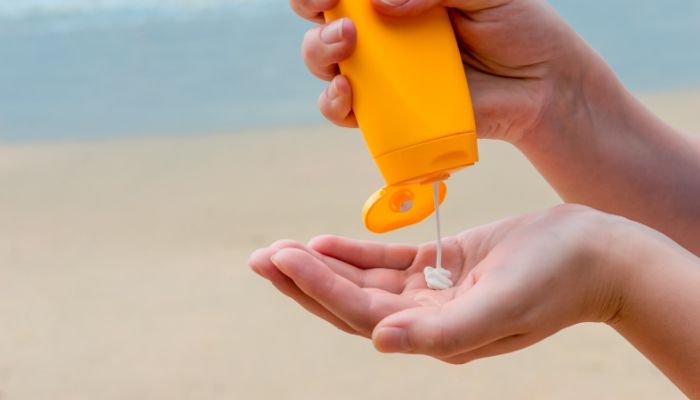
They also affect green algae by interfering with photosynthesis. It also causes reproductive issues and impairs the nervous system of sea urchins. In dolphins, mussels and other fish, it causes fertility issues and accumulates in their tissues, affecting their growth.
5. Pollution From Oil Spills
Oil spills can occur when tankers are transporting crude oil at sea. However, what makes them extremely dangerous is the difficulty in cleaning them and the impact they have on the marine ecosystem.
Oil forms a thin film on the water’s surface, preventing the dissolution of oxygen in the water. In coastal areas, it can pollute the beaches and kill seabirds. When oil is coated in a bird’s wings, it cannot fly, and its feathers are stripped of their insulating properties, resulting in death due to hypothermia.
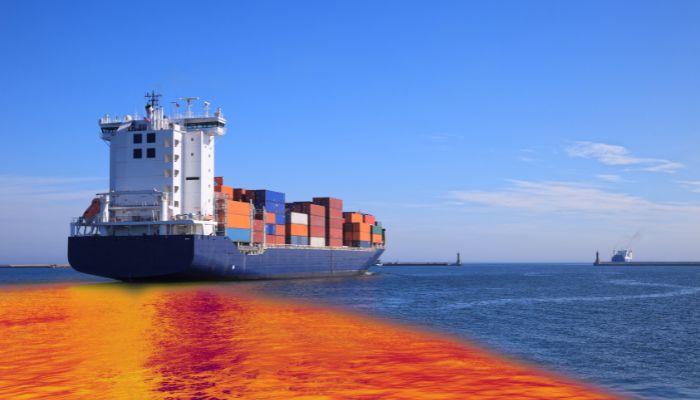
Oil has many toxic compounds that cause health issues to marine species, such as heart and immune system damage. Recovery, cleaning and rehabilitation are essential steps of an oil spill response. If an oil spill occurs on a massive scale, it might do more significant damage as it is impossible to deal with quickly.
The Deepwater Horizon oil spill of 2010 was one such disaster whose impacts are felt even today.
6. Pollution from toxic industrial waste and sewage
Industrial waste is created during a manufacturing activity in factories or industries. It might be solid, liquid or semi-liquid waste may also be hazardous. This waste is often not appropriately treated and contaminates the soil or adjacent water bodies. It can also mix with municipal waste and reach oceans via rivers.
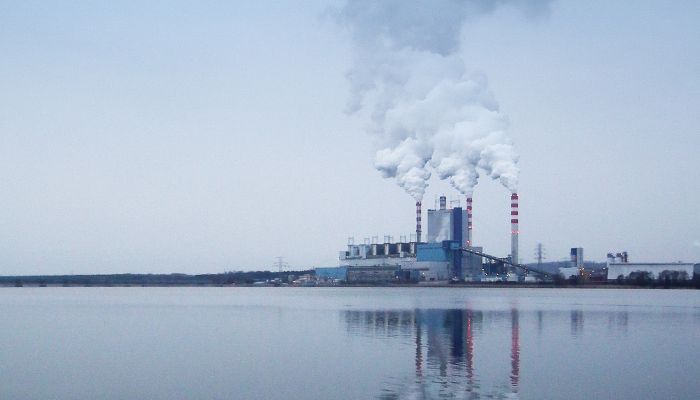
There are laws for treating sewage before releasing it into water bodies; however septic system failure or poor maintenance could result in the discharge of partially treated water into the rivers, which contains soaps, human waste, sludge etc.
Such water may also have metals or chemicals which negatively affect the aquatic ecosystems and the health of people drinking that water. The toxins can kill marine life and disrupt the food chain.
7. Light Pollution
The invention of the light world illuminated the whole world. Today, even shores and coastal areas are well-lit due to the establishment of ports for trade and recreation. However, scientists have revealed the negative impacts of artificial light at night on marine species and their life patterns.
For instance, when a baby turtle comes out from its egg, it follows the moonlight to find the ocean; however, light from seaside restaurants, beachside cabanas, and bonfires hinders them, making their chances of survival even less.
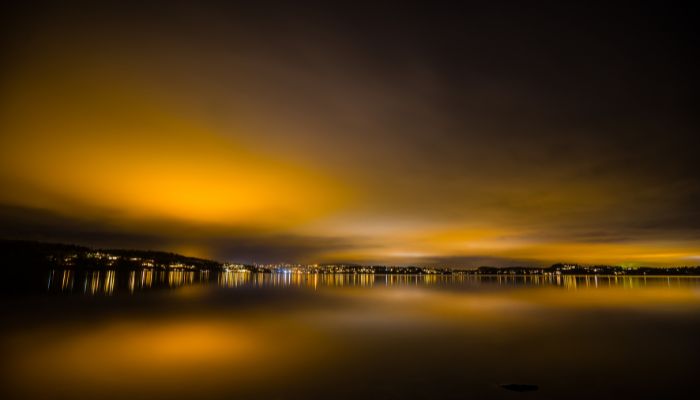
Light also affects fish and other creatures that thrive in shallow waters near the shores. Excessive light interferes with their circadian rhythms, according to which species decide their times of migration, breeding etc. Also, light exposes small fish and makes them more susceptible to an attack by predators.
8. Pollution from atmospheric emissions
The ocean can be polluted due to the atmosphere in several ways. The wind takes dust and debris, including small particles, plastic pieces etc., from landfills to rivers or seas. During summers, dust from the Sahara Desert moves to the Caribbean and Florida, from where it flows into the subtropical Atlantic. These dust events have declined the health of coral reefs along the Carribean and Florida.
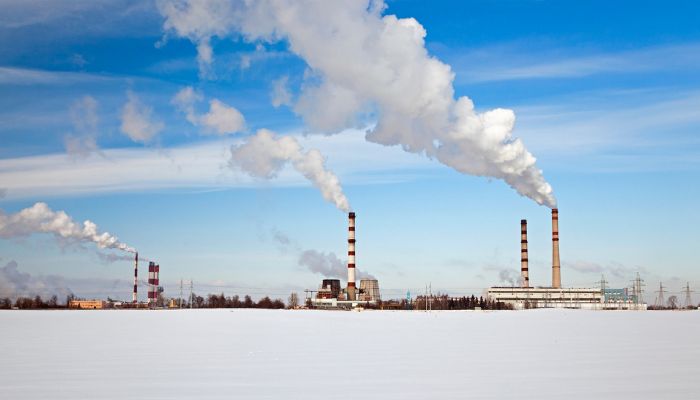
Since the 1990s, dust storms have worsened due to increased African droughts. Additionally, ocean temperatures are rising due to climate change and global warming. This raises the level of carbon dioxide in the atmosphere, which is absorbed by the oceans, changes the chemistry of water, and impacts marine life.
It affects the pH of the oceans and seas, which are becoming more acidic, leading to ocean acidification. As a result, marine creatures like corals and plankton are affected as they cannot form their shells and skeletons in such acidic water, which erodes their shells or skeletons.
9. Ocean Pollution From Eutrophication
Eutrophication is a process which occurs when a body of water receives excess nutrients, mainly nitrogen and phosphorus, which lead to the growth of algae. Nutrients from freshwater sources end up in the open sea and oceans through runoff from municipal and industrial plants.
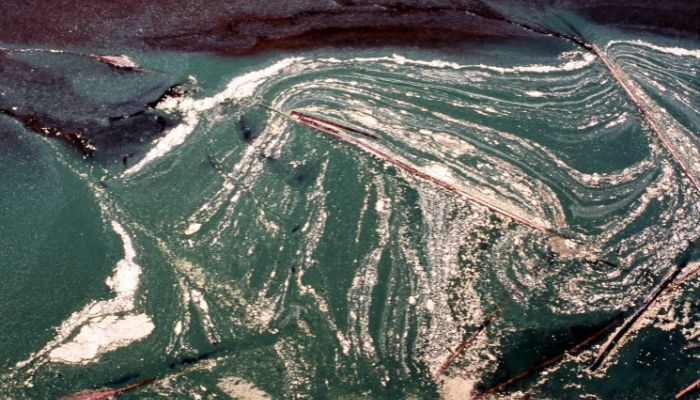
Its consequences are harmful algal blooms that absorb all sunlight and prevent it from penetrating the water surface, creating dead zones in the ocean with deficient oxygen levels. Also, some marine mammals die while others migrate from such areas to others, affecting the delicate balance of the marine ecosystem.
10. Ocean Pollution from Deep Sea Mining
Deep-Sea mining operations have detrimental impacts on oceans. A 30-year mining project affects around nine thousand square kilometres of ocean seabed. When seamounts are stripped of the outer layer of crusts possessing cobalt and other metals, it destroys the deepsea sponges and coral ecosystems.

Mining the hydrothermal vents kills the unique habitats and associated organisms as well. Mining also creates plumes of sediment as the activity stirs the seafloor. These sediments spread thousands of kilometres beyond the actual mining site and negatively affect filter feeders like corals and species that use bioluminescence to catch prey or find mates.
A Brief History of Marine Conservation
In the 1990s, there were no laws to regulate and check marine pollution; however, things changed after the publication of Rachel Carson’s Silent Spring in 1962. The book highlighted the detrimental effects of pesticides on the environment. The 1970s were known as the Environmental decade, which saw an increased human concern for the land and marine ecosystems.
The London Convention came into being in 1975 and was the first international agreement to protect and safeguard the environment. Several acts, such as the National Environmental Policy Act, Clean Water Act and the Marine Protection, Research, and Sanctuaries Act, were passed in this decade.
Even today, many laws are formulated at national and international levels to prevent the pollution of water bodies; however, enforcing them remains a challenge.
Tackling Ocean Pollution- What can we do?
Many contaminants and pollutants like plastic are non-biodegradable and remain in the oceans for thousands of years. Chemical pollutants also do not break down easily and accumulate in the food chains.
Although there have been many attempts to clean up rivers, bays, streams or ocean patches, they have met with limited success since pollutants are trapped in marine sediments, making total cleanups impossible.
Hence, there are many things we can do at an individual level to minimise polluting our marine environment.
Some points include the following-
- Practising the three Rs of reduce, reuse and recycle. Recycling and Reusing items can reduce the generation of more waste.
- Be aware and vigilant about marine creatures at a beach or coastal areas.
- Do not litter any areas, especially beaches or coasts, as such garbage chokes marine life.
- Avoid using chemical-laden creams when at a beach.
- Minimise the usage of products with excessive plastic packaging. Many eco-friendly products are available, and you can opt for them if you desire.
- Stop using plastic items like crockery, bags, straws, etc., as they harm human health. Using jute bags or any reusable bags for grocery shopping is advisable.
- If you buy anything with a plastic six-pack holder, then be sure to cut and then dispose of it off. If not done so, it expands in water and chokes or tangles marine organisms.
- Create awareness, talk to your parents, friends, and family and educate them about the harmful effects of plastic and chemical-laden products on us and our planet’s health.
- If you have a kitchen garden, use organic fertilisers instead of chemicals.
- Dispose of garbage properly so it can be sent to recycling centres and does not enter the oceans and seas.
Conclusion
Ocean or marine pollution might seem like a minor problem to us, but it is serious. Since human activities have created this problem, it is our responsibility to tackle it. If not done so at the right time, our once beautiful blue oceans would be filled with heaps of plastic. Thousands of marine species would go extinct, and the environmental balance would be affected.
We exist because of the bountiful resources bestowed on us by our planet. Let us do our best to preserve and protect them as best as we can.
You may also like to read-
- Ocean Pollution – 6 Things That Make It Worse
- We Have 29 Years To Save The Oceans – New Analysis On Ocean Plastic Pollution
- Effects of Noise Pollution from Ships on Marine Life
- What Does the Term “Ocean Biome” Means ?
- 8 Ways Cruise Ships Can Cause Marine Pollution
Disclaimer: The authors’ views expressed in this article do not necessarily reflect the views of Marine Insight. Data and charts, if used in the article, have been sourced from available information and have not been authenticated by any statutory authority. The author and Marine Insight do not claim it to be accurate nor accept any responsibility for the same. The views constitute only the opinions and do not constitute any guidelines or recommendations on any course of action to be followed by the reader.
Do you have info to share with us ? Suggest a correction

About Author
Zahra is an alumna of Miranda House, University of Delhi. She is an avid writer, possessing immaculate research and editing skills. Author of several academic papers, she has also worked as a freelance writer, producing many technical, creative and marketing pieces. A true aesthete at heart, she loves books a little more than anything else.
Subscribe To Our Newsletters
By subscribing, you agree to our Privacy Policy and may receive occasional deal communications; you can unsubscribe anytime.



